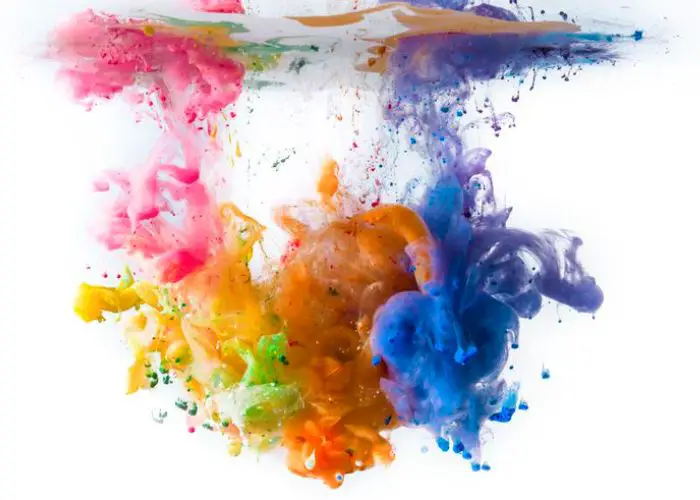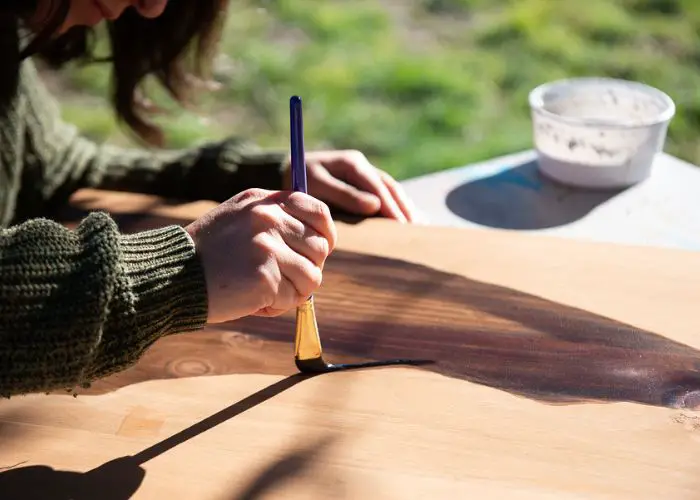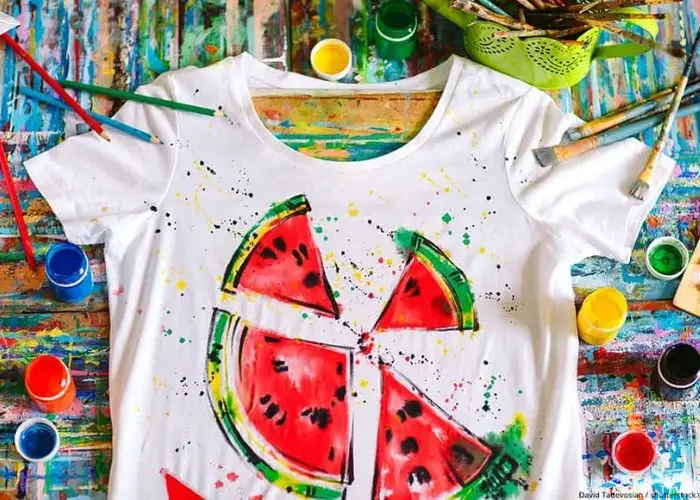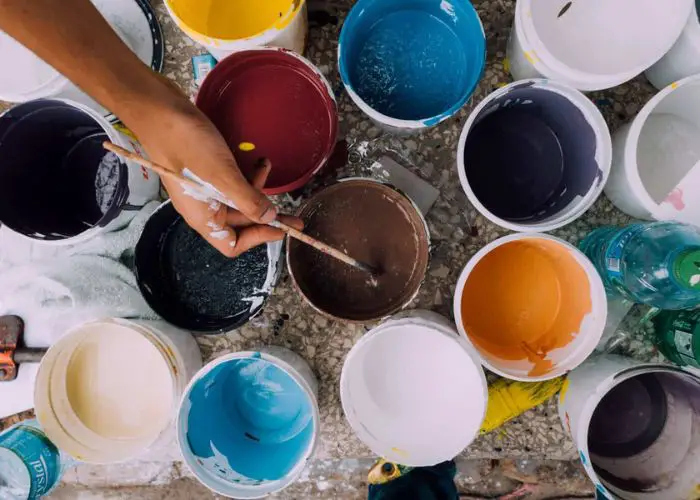When it comes to acrylic paint, there is a lot of confusion about whether or not it is water-soluble.
In this blog post, we will answer that question and also discuss other aspects of using water in acrylic painting.
We will cover everything from the different types of water-based acrylic paints to how much water you can add and why it might not be the best option.
By the end of this post, you’ll have all the information you need to start painting with acrylics like a pro.
So, is acrylic paint water soluble? Let’s find out.
Is Acrylic Paint Water Soluble?
Yes, acrylic paint is water-soluble. However, the degree to which it is soluble depends on the type of paint and the medium that you are using. For example, if you use a water-based medium like latex or acrylic emulsion, your paint will be more soluble than if you use an oil-based medium like linseed oil.
What is Acrylic Paint?
Acrylic paint is a fast-drying paint made of pigment suspended in acrylic polymer emulsion. Acrylic paints are water-soluble but become insoluble when they dry.
This type of paint was first invented in the 1940s and has since become a popular choice for artists of all levels.
Acrylic paint is known for its vibrant colors and versatility. It can be used on a variety of surfaces, including canvas, wood, metal, and glass.
Acrylic paint dries quickly, so it is ideal for painting in layers.
You can also add mediums to acrylic paint to change the consistency, opacity, and drying time.
One advantage of this media for painting is that it does not yellow with age.
What is acrylic polymer emulsion made of
Acrylic polymer emulsion is made of acrylic monomers that are emulsified in water. These monomers are then polymerized to form the final product.
The main benefit of using an acrylic polymer emulsion is that it provides a more durable finish than other types of paint.
Is Acrylic Paint Water-Based?
Yes, acrylic paint is water-based. Its pigments are suspended in an acrylic polymer emulsion, a water-soluble substance.
This means that acrylic paint can be easily thinned and cleaned up with water, making it a popular choice for artists and DIY projects.
Here are the reasons why:
- Acrylic paint is made up of pigment suspended in an acrylic polymer emulsion, a water-soluble substance. This means that it can be easily thinned with water to achieve the desired consistency for painting. Here is how to thicken watery paint.
- Another reason why acrylic paint is water-based is that it can be easily cleaned up with water. Unlike oil-based paints, which require solvents like turpentine or mineral spirits for cleaning up, acrylic paint can be easily cleaned up with just soap and water.
- Acrylic paint dries quickly when exposed to air, and the drying time can be further reduced by using a hairdryer or a fan. This quick-drying property makes it convenient to use in projects that require multiple layers of paint or a short turnaround time.
- Lastly, acrylic paint is versatile and can be used on a variety of surfaces, including canvas, paper, wood, and even fabric. Its water-based nature makes it suitable for use in various art forms, including painting, printmaking, and mixed media.
Does Acrylic Paint Dissolve in Water?

Acrylic paint is water-soluble, meaning it will dissolve in water. However, once the paint dries, it becomes insoluble.
The paint molecules swell up and become larger when they come into contact with water.
This increase in size makes it difficult for the paint to adhere to surfaces, which is why you can clean your paintbrush by simply rinsing it under a tap.
You need to be careful when adding water to your acrylic paint. Too much water can cause the paint to lose its color and become runny.
However, once the paint has dried, it is much more resistant to water and will not swell up in the same way.
This is why acrylic paintings can last for many years without fading or losing their vibrancy.
So, if you’re wondering whether you can use water to thin your acrylic paint or clean your acrylic brushes, the answer is yes! Just be aware that the paint may not behave the same way when it’s dry.
How Much Water or Medium Can I Add to Acrylic Paint?
The simple answer is that you can add as much water or medium as you like to your acrylic paint, but there are a few things to keep in mind.
First, the more water you add, the more diluted your paint will be. This can be helpful if you’re looking for a lighter color or a more transparent effect.
But it’s important to remember that your paint will also be less opaque and have less coverage.
Second, adding too much water or medium can cause your paint to lose its adhesion and start to chip or flake off.
So, if you’re planning on adding a lot of water or medium to your paint, test it on a small area first to ensure it doesn’t affect the overall integrity of your painting.
Finally, remember that the medium you use can also affect the appearance of your paint.
For example, adding a glossy medium will give your paint a shiny finish, while adding a matte medium will give it a more muted look.
Interesting read: Difference between poster and acrylic paint.
Why Water Is Not Always The Best Option
While water is a great way to thin your paint and clean your brushes, it’s not always the best option.
Water can cause your paint to lose its color, become runny, and it is not as effective at cleaning brushes as other solvents.
If you’re looking for a more permanent solution, consider using a medium instead of water.
Mediums are added to paint to change its consistency, opacity, and drying time. They can also be used to thin your paint without affecting the color.
Some common mediums include acrylic gel, acrylic flow improver, and acrylic retarder. You can also use isopropyl alcohol or denatured alcohol to thin your paint.
These solvents will not affect the color of your paint and are more effective at cleaning brushes.
Mixing Acrylic Paint with Water
Can you mix acrylic paint with water? Yes, mixing acrylic paint with water can help to achieve a watercolor paint effect.
Adding just a small amount of water can create a runny consistency that is perfect for painting delicate details or washing over large areas.
The paint will still retain its pigment and brightness, but the color will appear softer and more translucent.
If you add too much water, however, the paint will become watered down and may not adhere to the paint surface properly.
It is important to experiment with the ratio of paint to water until you find the consistency that works best for you.
How to Thin Acrylic Paint for Wood

If you aim to thin acrylic paint for application on wood, several factors need to be considered. Employing the right techniques for thinning acrylic paint can ensure optimal results.
First, sanding the porous surface is a good way to create a smooth base for your paint. This will help prevent the paint from pooling or dripping.
Second, you’ll need to choose the right type of paint thinner. Some common thinners include isopropyl alcohol, denatured alcohol, and acetone.
These solvents will not affect the paint’s color and will help prevent the paint from pooling.
Finally, you’ll need to experiment with the amount of thinner you add to your paint. Too much thinner will make your paint runny, while too little will make it difficult to spread evenly.
Can You Thin Acrylic Paint With Water for Airbrushing?
Yes, you can thin acrylic paint with water for airbrushing. However, there are a few things you need to keep in mind when doing so.
First of all, it’s important to use distilled water rather than tap water, as the chemicals in tap water can break down the acrylic paint.
Second, you’ll need to add a bit of flow improver to the mix to prevent the paint from clogging up the airbrush.
And finally, you’ll need to thin the paint until it has the consistency of milk – if it’s too thick, it won’t flow properly through the airbrush.
Can You Mix Water with Acrylic Paint for Pouring?
Many artists choose to thin their paints with water in order to achieve a more fluid consistency for pouring.
However, water can also reduce the longevity of your paint and cause it to crack or chip over time. For this reason, many pouring artists prefer to use an acrylic medium instead.
Mediums are designed to thin paint without sacrificing quality, and they can help create a smooth, consistent pour.
If you’re new to pouring, we recommend experimenting with both water and mediums to see which results you prefer.
Everything You Need to Know When Painting with Acrylics
Here’s everything you need to know about painting with acrylics, from choosing the right paint to creating beautiful finishes.
When selecting acrylic paint, it’s important to choose a quality brand. We recommend non-toxic water-based acrylic paint.
You’ll also want to decide whether you want to use student-grade or professional-grade paint.
Student-grade paint is typically less expensive but can be more difficult to work with. Professional-grade paint is usually more expensive, but it will give you better results.
Once you’ve chosen your paint, you’ll need to select the right type of brush. For most applications, synthetic brushes work best with acrylics.
But if you’re looking for a more natural look, you can also use natural bristle brushes.
When shopping for brushes, always look for those that are specifically labeled as being for use with acrylics.
Now that you have your supplies, it’s time to get started! Begin by sketching out your design on a piece of paper.
Some people may ask, do you paint light or dark colors first? When painting with acrylics, is it light to dark.
This will help you to build up your painting and create depth. As you work, remember to keep your brushstrokes smooth and even.
Once you’re finished, allow your painting to dry completely before adding any final details.
Is Acrylic Paint Water-based or Oil-based?
Acrylic paint is a type of paint that is made from a polymer. The base of the paint is typically water-based, but there are also oil-based acrylics.
Acrylic paint dries quickly and can be diluted with water if necessary. Artists frequently use it because it can be used on a variety of surfaces, including canvas, wood, and metal.
They’re also easy to clean up with just soap and water. However, water-based acrylics can dry out quickly, so you’ll need to work fast or use a setting agent.
Oil paints, on the other hand, have a longer open time, so you can take your time blending and working with the paint.
They also have a more robust color that can resist fading better than water-based paints.
However, oil painting is also more difficult to clean up and may require the use of solvents.
When choosing acrylic water or oil paint, it is important to consider the intended purpose of the painting and the type of surface that will be used.
And can you use acrylic and oil paint together? Read to find out.
Do You Use Water with Acrylic Paint on Canvas?
Yes, you can use water with acrylic paint on canvas. However, there are a few things to keep in mind. First, only use distilled or deionized water when diluting your paint.
This is because tap water can contain minerals that will damage the canvas over time. Second, always add an acrylic medium to the paint when diluting it with water.
This will help keep the paint from drying out too quickly and improve its adhesion to the canvas.
Finally, only add a small amount of water at a time. Too much water can cause the paint to lose its color and become runny.
What Medium to Use with Acrylic Paint for Fabric?

A few different acrylic mediums can be used with acrylic paint for fabric. One option is to use an acrylic fabric medium.
This liquid is added to the paint and helps improve the paint’s adherence to the fabric. It also prevents the paint from cracking or peeling over time.
Another option is to use an acrylic gel medium. This thick gel is added to the paint and helps create a more textured look.
It can also be used to add body to the paint so that it does not sink into the fabric. Finally, you can use an acrylic varnish.
This clear coating is applied over the top of the paint to protect it from damage. It also gives the paint a glossy paint film.
Related: Acrylic vs fabric paint
How to Reactivate Acrylic Paint?
We have a detailed guide on how to revive dried acrylic paint. Check it out.
If your paint is beginning to dry out, there are a few ways that you can reactivate it. One option is to add a small amount of water and mix it into the paint.
This will help to loosen the dried paint and make it easier to work with. Another option is to add an acrylic medium.
This will help keep the paint from drying out too quickly and improve its adhesion to the surface.
Finally, you can use a setting agent such as Golden Acrylic Wetting Agent. This is a chemical that is added to the paint and helps to keep it from drying out.
It is important to use setting agents sparingly, as they can cause the paint to become brittle over time.
Read: How to keep acrylic paint wet?
FAQs
Does dried acrylic paint dissolve in water?
Yes, dried acrylic paint is soluble in water. However, it is important to note that it will take some time for the paint to dissolve completely. Therefore, you may need to use a brush or other tool to help loosen the dried paint.
How much water can you add to acrylic paints?
You can add up to 50% water to acrylic paint, but this will dilute the color.
Can you mix acrylic paint with water?
Yes, you can mix acrylic paint with water. However, it is important to note that this will dilute the color of the paint.
What is the best way to thin acrylic paint?
The best way to thin acrylic paint is to add an acrylic medium. This will help keep the paint from drying out too quickly and improve its adhesion to the surface.
Is water-based or oil-based acrylic paint better?
Water-based acrylic paint is typically better for beginners because it is easier to clean up and is less toxic. Oil-based acrylic paint is more durable and has a more robust color, but it is more difficult to work with.
Acrylic Paint Water Soluble Summary
Is acrylic paint water soluble? Yes, it is. However, there are a few things to keep in mind when using water with acrylic paint.
First, always use distilled or deionized water, and add an acrylic medium to the paint when diluting it.
Only add a small amount of water at a time, as too much can cause the paint to lose its color and become runny.
If your paint is beginning to dry out, you can reactivate it by adding a small amount of water or an acrylic medium.
Finally, water-based is typically better for beginners when choosing between water-based and oil-based acrylic paint.
It is easier to clean up and is less toxic. Oil-based acrylic paint is more durable and has a more robust color, but it is more difficult to work with.
Thanks for reading! We hope this article was helpful.










Leave a Reply